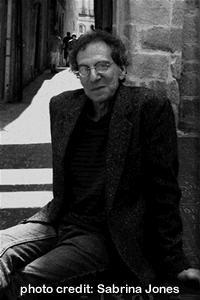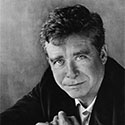In Vilnius
Novelist Steve Stern recently visited Lithuania and found a world the Nazis thought they had destroyed
September 7, 2012 Novelist Steve Stern grew up in Memphis, though not in the Pinch– an old Memphis neighborhood that is often the setting for Stern’s fiction and was once the city’s Jewish ghetto. Stern was in his mid-thirties when he returned to Memphis, after more than a decade away, to work in a Memphis folklore center and discovered the Pinch. The Yiddish culture and stories he found there gave him the focus and material he needed to write. Finding the Pinch, he has told interviewers, “felt like a homecoming, a place where my stories (which had been searching for somewhere to belong) could happen.”
 So it should come as no surprise that Stern would one day find himself in Eastern Europe, the homeland of the old Jewish Memphians who had settled in the Pinch. In a new blog called “The Arty Semite” for Forward, Stern describes his stay in Vilnius, Lithuania, and his reason for traveling so far–despite a distaste of travel–to participate in a literary seminar where he would be teaching English-speaking creative-writing students exactly what he teaches English-speaking creative-writing students at home. The reason, of course, was the rich Jewish history of Lithuania: “What reputation I have as a writer is inspired by Yiddish culture and folklore, and old Vilna once boasted the mother lode of that culture before it was utterly erased,” he writes in the first blog post.
So it should come as no surprise that Stern would one day find himself in Eastern Europe, the homeland of the old Jewish Memphians who had settled in the Pinch. In a new blog called “The Arty Semite” for Forward, Stern describes his stay in Vilnius, Lithuania, and his reason for traveling so far–despite a distaste of travel–to participate in a literary seminar where he would be teaching English-speaking creative-writing students exactly what he teaches English-speaking creative-writing students at home. The reason, of course, was the rich Jewish history of Lithuania: “What reputation I have as a writer is inspired by Yiddish culture and folklore, and old Vilna once boasted the mother lode of that culture before it was utterly erased,” he writes in the first blog post.
There’s hardly a writer working in English who’s funnier than Steve Stern, but visiting Vilnius was a sobering experience:
It’s a beautiful city, Vilnius, a hard place in which to imagine the unimaginable. Especially when you’re strolling serpentine streets flanked by blue and yellow houses, some squat as toadstools, others narrow as the spines of books, most sprouting scrollworked balconies. The baroque churches look like pink cupcakes, the hidden courtyards beckon like grottos, and the women (Sabrina, I can look) are whip-thin and sleek as cats. It was a storybook milieu, complete with an argosy of hot air balloons overhead, and it dazzled me to the point where I forgot to miss what was missing.
What was missing? Only about 1,000 years of the most vibrant Jewish life to be found anywhere on the planet. It was here that the Vilna Gaon sprang from the womb reciting Talmud, and the poets of Yung Vilne kept the printing presses busy until the plates were melted into bullets for the resistance. Here the shelves of the YIVO archive and the Strashun Library groaned from the gathered weight of the Diaspora, and the cauldron of conflicting ideologie—Hasidim vs. misnagdim, bundists vs. Zionists—boiled over in the streets. Here Chaim Soutine and Jacques Lipchitz plied their visionary trade within earshot of Jascha Heifetz’s violin. All that remained of that world, however, was a handful of memorial plaques, some busts and a couple of signs informing the tourist that history was once here but had since moved on. Not that I’d expected more; though I’ll confess to a romantic hope that, if I connected my passion for Yiddish culture to its source, sparks would fly and the streets swarm again with Jews. Instead there was only a sputtering of my good intentions before the impulse fritzed out and expired. Then it was easier to brood over what was absent than to try and recover what was lost.
Read the rest of the essay here. Read Stern’s other blog posts about Vilnius here and here.
Please click here to read a Q&A with Steve Stern and here to read Chapter 16‘s review of Stern’s most recent novel, The Frozen Rabbi.


